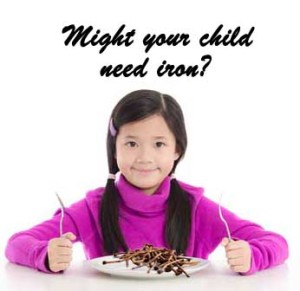 Scientific Reports, 2018 Jan 15;8(1):788.
Scientific Reports, 2018 Jan 15;8(1):788.
17 studies on iron and ADHD were analyzed by Tseng et al in Taiwan.
Iron does more than prevent anemia; besides helping in homeostatis of the hemoglobin (red blood cell) structure, iron is important to the function of antioxidants, genetic repair and the operation of the central nervous system (CNS). It is important for brain development and neurotransmitter function. Iron is stored bound to ferritin, since free iron is actually dangerous.
The authors found that:
- The children with ADHD had a significantly lower level of peripheral serum ferritin;
- The children with ADHD had a significantly lower level of serum iron;
- Not counting children receiving methylphenidate (Ritalin), chldren with ADHD had a significantly lower level of serum transferrin;
- ADHD symptoms were more severe in children with iron deficiency (ID) than in children without.
Dopamine is a neurotransmitter important in behavior and mood. Tseng et al suggest that low peripheral iron levels may indicate insufficient iron storage and this may dysregulate neurons involved in dopamine neurotransmission, disrupting dopamine activity. An interesting observation was made that dopamine is also involved with restless leg syndrome (RLS), and ADHD is more common in patients with RLS.
QUOTE re ADHD and RLS: “Therefore, iron deficiency with resulting brain dopamine dysfunction may be a common pathway for the pathophysiology of both disorders.”
Although the authors could not find a clear interaction between drugs and iron levels, it was suggested that methylphenidate (Ritalin) may cause a poor appetite and less iron intake in children with ADHD. On the other hand, children taking high levels of vitamin C would have enhanced iron absorption. Most children in these studies were on medication, or their medication status was not reported, so the authors hope future studies will recruit drug-free participants, and made several suggestions for future studies.
NOTE: In the meantime, it doesn’t hurt to ask your doctor to test your child with ADHD for iron levels and serum ferritin levels even if the child does not appear to be anemic.
NOTE: Numerous tables and comparisons are included in the review full text which is available below, and links to relevant studies are included in their References.
MedLine || Full Text
ADDED February 17, 2018:
Some other interesting recent studies on iron:
- Andre et al (2015) showed that different kinds of potato have varying amounts of iron, and the availability of that iron for human digestion varies depending on the amount of vitamin C and other chemicals such as calcium or phenolic compounds in the potato itself (or taken separately). While the vitamin C increases iron availability, some of the other chemicals create insoluble iron compounds in the intestinal tract, reducing the uptake of iron. The authors boiled and tested 12 genetic strains of potato and the main take-home message (for me) seems to be that this is very complicated, but it is probably a good idea to eat your potatoes with some salad or other source of extra vitamin C … unless you have Parkinson’s (see next).
Andre 2015: In vitro bioaccessibility and bioavailability of iron from potatoes with varying Vitamin C, carotenoid, and phenolic concentrations.
MedLine || Full Text || Get Password
- Sun et al (2018) studied the effect of vitamin C on Parkinson’s and suggests using it with an iron chelator in order NOT to increase absorption of iron which is a problem for people with this disorder.
Sun 2018: The effect of vitamin C and iron on dopamine-mediated free radical generation: implications to Parkinson’s disease
MedLine || Full Text || Get Password
- Tolone et al (2017) showed that human genetics plays a role in iron absorption at the gut level, too. The authors found that a particular genetic makeup in some children with celiac disease may prevent good iron absorption, increasing the risk of anemia in these children.
Tolone 2017: The DMT1 IVS4_44C>A polymorphism and the risk of iron deficiency anemia in children with celiac disease.
MedLine || Full Text (no password needed)





















Thank you! There is some good and easily digestible (no pun intended!) information here. I thought I knew something about iron, but this is new to me. Any ways besides extra vitamin C to increase serum ferritin, or is this a genetic issue?
That is a really interesting question. Apparently, vitamin C increases iron absorption – according to a new study by Sun, Pham, and Waite (2018), vitamin C would be helpful in Parkinson’s, except for the problem that it increases iron absorption, which is bad for Parkinson’s patients. Therefore, they recommend using vitamin C for Parkinson’s together with an iron chelator to avoid that “problem.” Interesting concept; I will look up a few others, too, and add them and their links to the post.